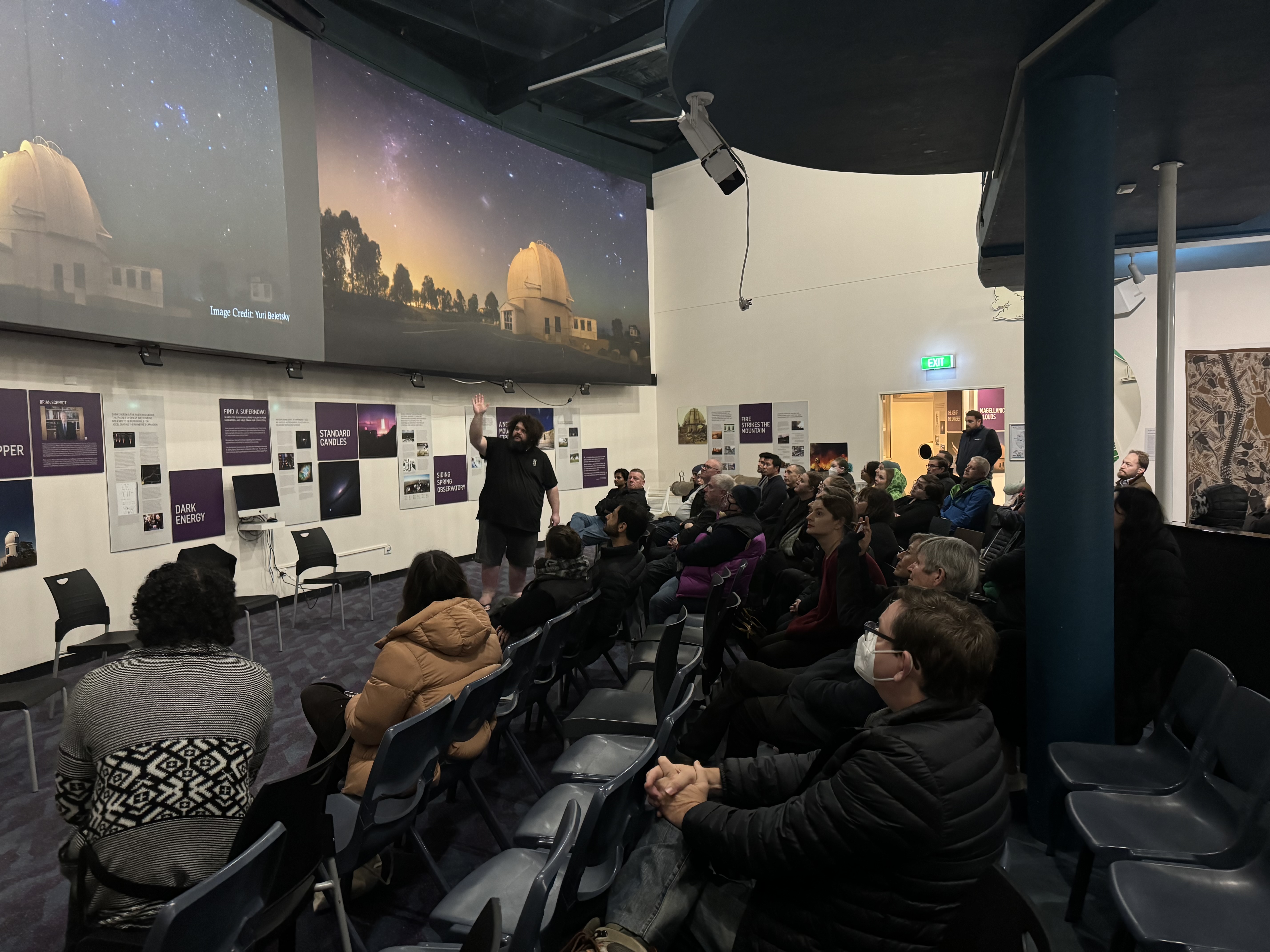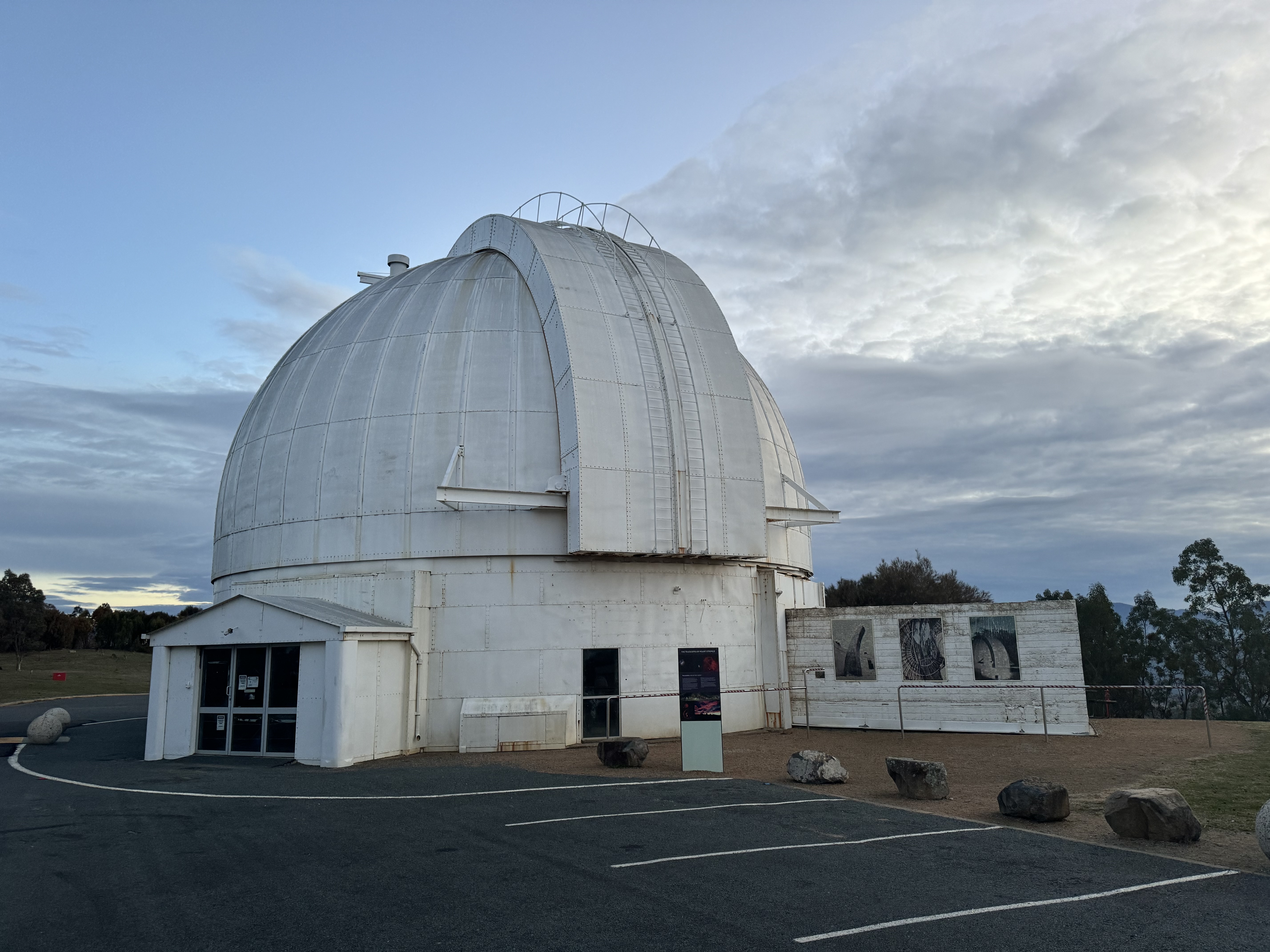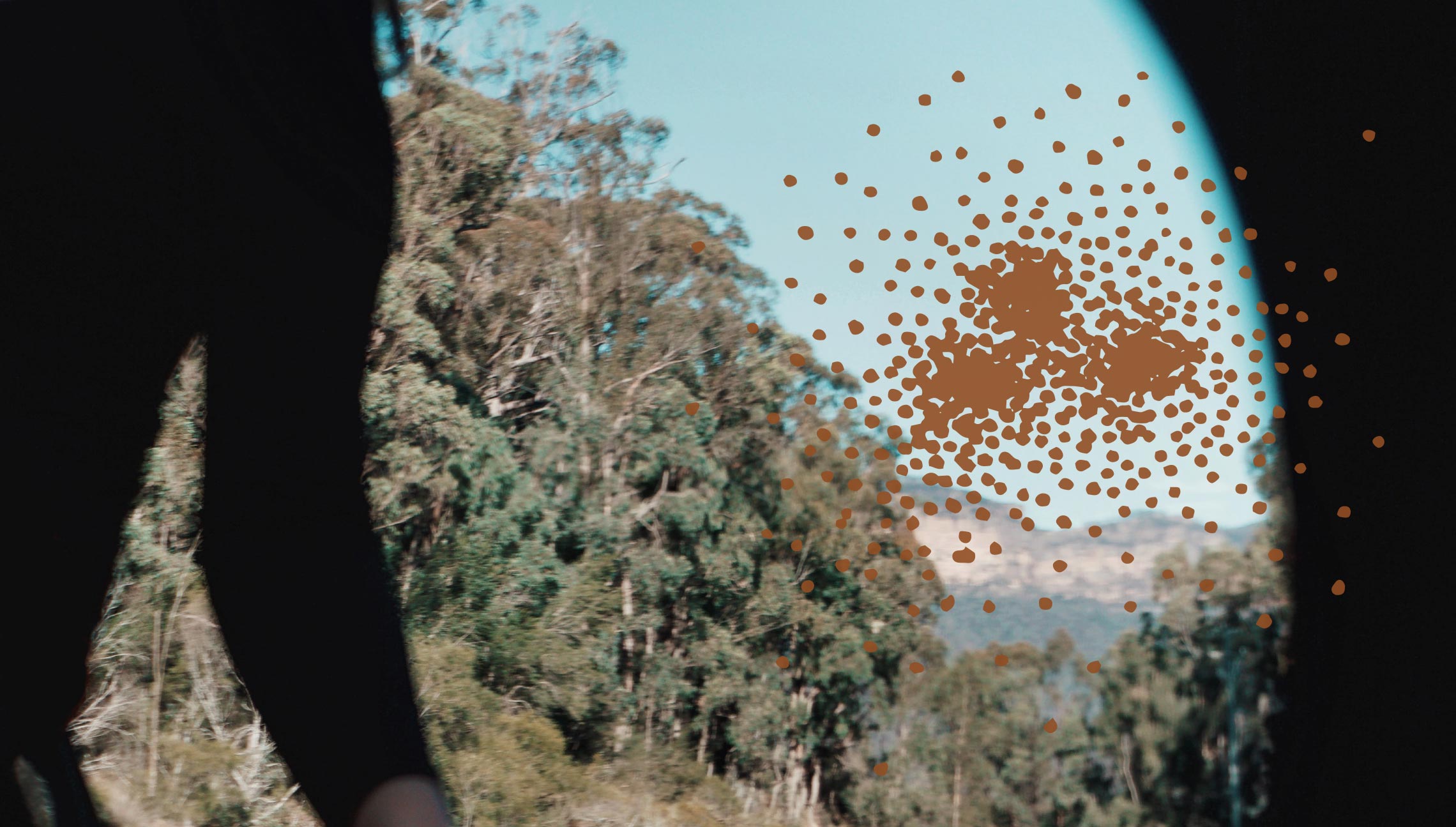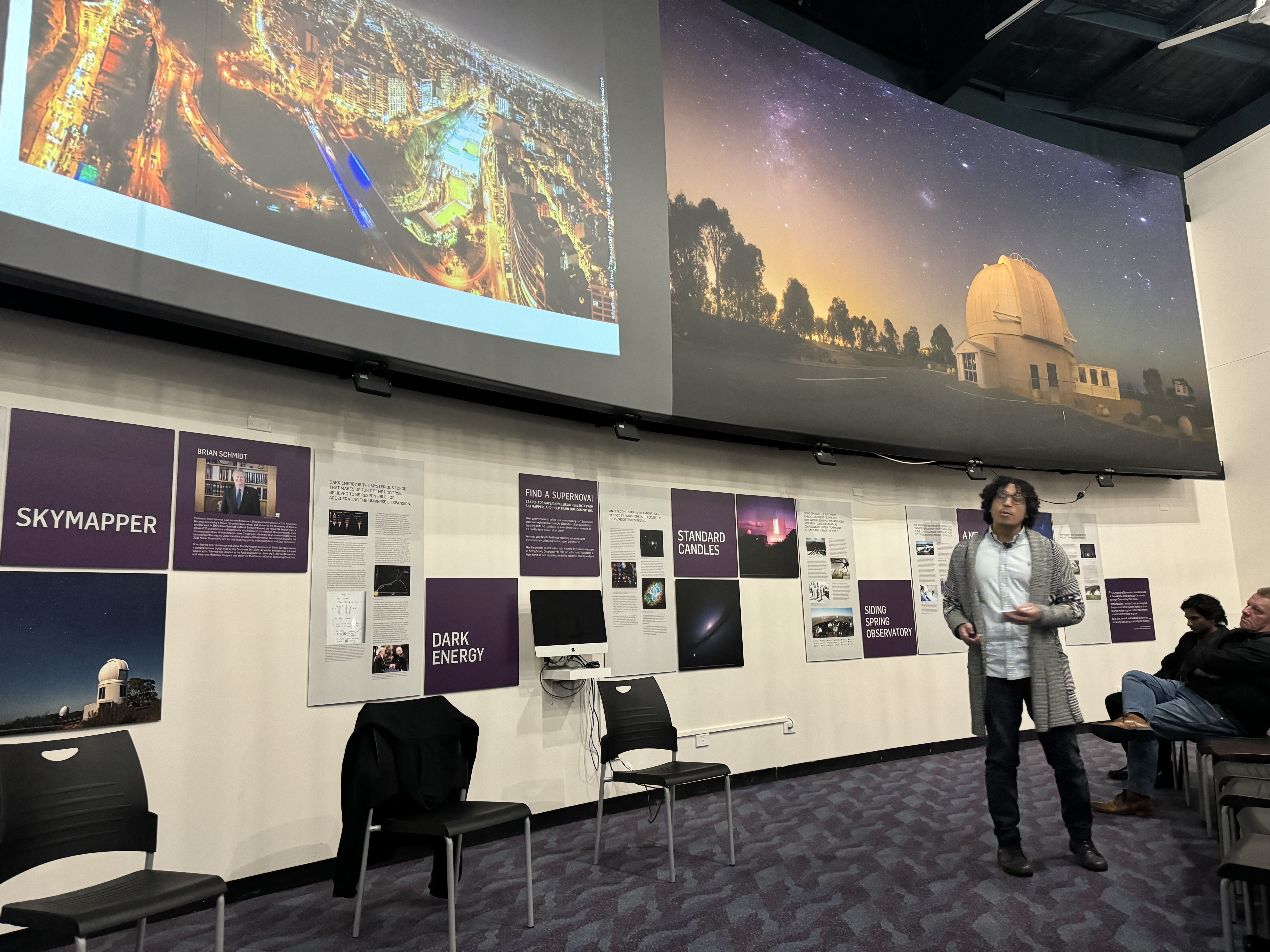At Mount Stromlo we are accustomed to looking up to the sky and into space, however, recently we gathered there to instead look across Canberra at our urban sprawl of human-installed lights.
Streetlights, a technology that many of us interact with on a daily basis, is the focus of a current project between ANU experts and industry.
Danny Bettay, PhD researcher from the ANU School of Cybernetics organised this event to give Canberrans the opportunity to engage with real changes happening around us at this very moment.
Recently Canberra is trialling a unique adaptive lighting trial, one that incrementally dims around 30,000 streetlights each night between the hours of 1 and 4 AM.
Why have industry and researchers teamed up to tackle streetlighting in Canberra? There are many reasons including reduction of energy consumption, promotion of sustainable cities, exploring streetlight’s interactions with wildlife, and the impact of light pollution on astronomy research as well as the cultural impacts this has.
Cybernetics is an interdisciplinary field where all the different components of a system, whether they are environmental, cultural, or technological are each considered important and given careful weighting.
“I am, like my ancestors, a scientist at heart”
Researcher and Gamilarroy man, Peter Swanton tells us at the start of this panel.
For tens of thousands of years, Peter’s family have been telling stories of the sky. Stories that are embedded with navigational tools, burial lore, natural law, scientific information, patterns of animal behaviour, and more. Stories that have been kept alive and passed down over generations. Stories that are now being erased by light pollution.

Light pollution is a growing cause of concern amongst all astronomers, as it obscures our view of the night sky.
Not only does light pollution, also known as “light glow”, impact our cultural connections to the sky, it also restricts scientific discoveries and research.
Today, Peter tells us that “I wanted to look at the scientific applications of Indigenous astronomy, and how we can use our stories to inform the way we look at things in Western science today”.
To significantly and systematically reduce light pollution and streetlight energy usage ANU researchers have teamed up with Omexom (the Australian arm of Vinci-Energies), a company working to support the energy transition in Australia.
The first part of this research, as Danny tells us, is to understand our current needs and wants when it comes to urban street lighting. This helps the research to then work out how to best reduce the harmful impact our city lighting is currently having, without removing the benefits this lighting provides us.
Like Peter, Danny’s family and culture are also culturally linked to the stars. Generations of fisherman from the Pacific Islands have used the stars to navigate.
“We’ve built cultures and rituals around light. We’ve built languages and communication to enlighten or to light someone up.”
An important realisation Danny has had throughout his PhD journey is that creating sustainable futures involves sustaining culture.
“We have a very complex relationship with light”
Danny’s PhD project takes a cybernetic, complex systems look towards understanding why lights and lighting is important. Specifically focusing on the safe, sustainable, and responsible aspects of lighting.
Combining the forces of industry, academia, culture, and politics these experts have worked together to reduce the brightness of around 30,000 ACT lights by 50%. This group have found a way to halve the amount of watts used, reducing Canberra’s carbon emissions by approximately 1,000 tonnes.
This is huge!
It’s also just the beginning, as this research can scale to all 83,000 lights in Canberra, to cities in Australian and New Zealand, and beyond.

Dr Brad Tucker, an astronomer and fellow at Mt Stromlo spoke to us about how light pollution is not a recent problem, that this is actually something that astronomers in Canberra have been dealing with since it started making observations difficult in the 1950s.
As Mt Stromlo celebrates its 100th anniversary this year, it is crucial for us all to ask what we want to the next 100 years of our night skies to look like.
Hear it from the experts themselves. Listen to the audio recording from the Urban Skies Conversation here:

